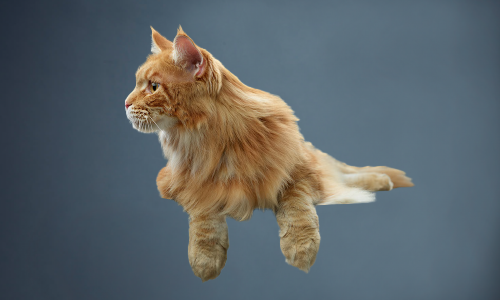Practice Scenario

Meet SOPHIE
A 5-year-old, spayed-female, mixed-breed cat
- Sophie is in hospital today for a routine wellness examination. Her body condition score is 5/9, which is consistent with previous visits.
- Although Sophie has always been healthy, her owner is concerned about Sophie’s risk for lower urinary tract disease.
- Sophie is an indoor-only cat that eats mostly dry cat food, although she receives occasional treats of canned food.
Adult Cat
Maintenance Nutrition for Healthy Adult Cats
Cats are obligate carnivores and, as such, have several unique nutrient requirements that must be considered for their optimal health and longevity. Feeding a

Key Messages
- Adult cats have higher dietary protein requirements than dogs and require taurine, arginine, arachidonic acid, preformed vitamin A and niacin (vitamin B3) in their diets.
- Some nutrients required by cats (i.e., taurine, arachidonic acid and preformed vitamin A) are found naturally only in animal tissues.
- Feeding adult cats to maintain ideal body condition can help them live long, healthy lives and avoid obesity-related health problems, such as diabetes mellitus and lower urinary tract disease.

"Your adult cat has unique nutrient requirements that [his/her] food needs to provide for [cat’s name] to live a long, healthy life. Feeding a high-quality complete and balanced cat food will meet those requirements with no need to supplement."
To Share With Pet Owner:
Evaluating Your Cat’s Body Condition
Assess your cat's Body Condition in just 3 simple steps.
What Do Cats Need to Thrive?
From affection to veterinary health care, learn what your cat needs to thrive.
Choosing to Feed Wet or Dry Cat Foods
Feeding either wet or dry commercial cat foods, or a combination of both, will provide cats with a complete and balanced diet.
Additional Resources
Buffington, C. A. T., Holloway, C., & Abood, S. K. (2004). Manual of veterinary dietetics. Saunders.
Case, L. P., Daristotle, L., Hayek, M., & Raasch, M. F. (2011). Canine and feline nutrition: A resource for companion animal professionals (3rd ed.). Mosby Elsevier.
Armstrong, P. J., Gross, K. L., Becvarova, I., & Debraekeleer, J. (2010). Introduction to feeding normal cats. In M. S. Hand, C. D. Thatcher, R. L. Remillard, P. Roudebush, & B. J. Novotny (Eds.), Small animal clinical nutrition (5th ed., pp. 361─372). Mark Morris Institute.
